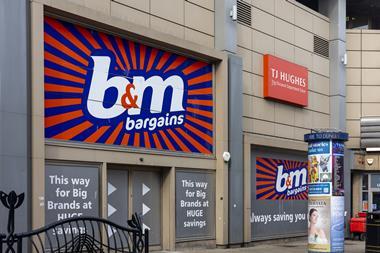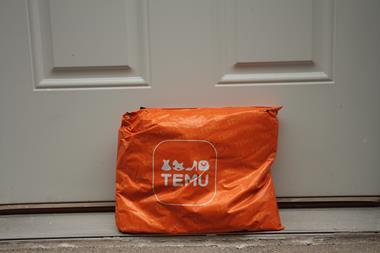The collapse of Woolworths left 27,000 people looking for work. Joanna Perry catches up with some of them and hears what they did next.
This Christmas will be the first for 100 years without Woolworths on the high street. It’s one thing for consumers to accept, but stop and consider how the staff feel. A year ago today they were in shock, having been told the day before the company was being placed in administration; a year on, fortunes have varied.
What unites the store staff is the feeling that despite the clear problems Woolworths faced, there was a place for the chain on at least some high streets. And with banks bailed out and car scrappage schemes launched since, their questions about why 27,000 people were allowed to lose their jobs have gone unanswered. Many had worked for the retailer for 20 years or more.
Retail Week contacted a number of senior staff and ex-directors of various parts of the Woolworths business, but there was reluctance among the top ranks to talk on the record. Employees who helped keep the tills ringing right to the end have not been so shy.
James Murphy went to the Middle East
James Murphy was a Woolworths area manager in charge of 22 stores turning over £60m a year ago, having joined 27 years previously as a graduate trainee.
Using LinkedIn after Woolies’ demise, he made contact with an ex-colleague who had moved to Saudi Arabia to work for a retail consultancy. Through that contact he secured a position as a head
of retail for stationery and office furniture retailer Al Maktaba.
He had already made more than 40 applications for jobs and only been invited to one interview. Murphy says many of his peers had similar experiences: “Most, if not all, my close colleagues
have started other jobs. In some cases better jobs, in others the same, but some of them have had to wait more than six months for the opportunity.”
Murphy doesn’t feel out of pocket from Woolworths’ collapse in terms of having to eat into his savings, but he has lost financial security particularly in relation to the Woolworths pension scheme. And he says that out of the many others in the UK who have lost jobs through the recession, the majority have received enhanced redundancy payouts.
Murphy says: “The biggest loss, which I do not think many people appreciate, is that we only received the statutory redundancy package, which for me was about £3,000. A year before people who took voluntary redundancy would have received £50,000-plus.
“The colleagues in Woolworths received only a fraction of the type of compensation package others will receive, and there were many people with a very long service.”
So who does Murphy blame?
He believes that the banks panicked in pushing Woolworths into administration as they have now recouped the £385m they were owed – despite the business having been liquidated at “fire-Sale prices”.
He concludes that while he has another challenging role, more effort should have been made to save at least part of the business. “Without doubt there were serious trading challenges that the business was facing – competition, loss of market share, etc – but within that there was a core profitable business and that could and should have been salvaged. I do feel that it was totally unnecessary to destroy a business with a heritage of 100 years.”
Paul seaton on behalf of the workforce
Former Woolworths systems manager Paul Seaton worked for the retailer for 25 years and has published a history of Woolworths to coincide with its 100 birthday. He also set up and runs the Woolworths Reunited website, which supports former staff and helps to put them in touch with potential employers.
Seaton says: “I was cheesed off that no one had done anything for staff. I have given up a year of my life as it is life-changing stuff. This has made more difference than anything else I have done in my career.”
He doesn’t feel that Woolworths’ failure was inevitable, but that mistakes were made. “All of the old hands feel that Trevor Bish-Jones tried to repackage Woolworths as something slightly different and that didn’t work. It made the business more vulnerable to the downturn.”
Seaton can’t understand why money from Woolworths’ pension scheme wasn’t used to save the business. He says that the latest thinking among ex-employees is that the pension fund was nowhere near as underfunded as was estimated at the time of the administration. However, he is not bitter towards the retailer’s administrator Deloitte, saying that he has always found them to be highly professional.
The Woolworths Reunited site has given him a good insight into what happened to the workforce since its collapse.
“High street retailers responded phenomenally well, and within days we were talking to people at Wilkinsons and Boots, etc, about what they could do to help.”
Store management staff have fared the best – about 80% have found work with other retailers.
Part-time sales assistants have struggled, and Seaton says that the significant percentage of the workforce who worked for 16 hours a week or less on the minimum wage are now better off waiting for a job with the right hours than taking something else that will cause them to lose out on benefits.
He says that “next to none” of the staff would say that the business couldn’t have been saved. But he adds: “Most people in government and the media hadn’t shopped at Woolworths for years and didn’t realise what a lifeline it was.”
Claire robertson founded Wellworths
One-time Woolworths store manager Claire Robertson has had a whirlwind year. After the high-profile launch of her Wellworths store in March, Retail Week caught up with her to hear how the Dorchester shop is trading in the run-up to Christmas, and how her staff feel 12 months down the line from the shock announcement that they would be losing their jobs.
All but one of her team of ex-Woolies staff is still working at the store and have been busy in the past few weeks setting up a big Christmas section.
In contrast, she says many of the other Woolworths stores in the area are still vacant or only just being refitted.
Robertson and her staff have recovered well from the shock of the events a year ago. She says: “At the time we were devastated. I didn’t want to see Woolworths go, and because it happened on the November 26, going into last Christmas was horrendous.” She is trying to make the same period this year as much fun as possible, but remains focused on getting through Wellworths’ first year before she considers any expansion plans.
For Robertson personally it has clearly been an opportunity, and while she had always dreamed of opening her own store, she had thought that a lottery win would be necessary to fulfil her ambition.
Robertson’s partner was also a Woolworths manager, and has gone on to a position at a supermarket, a route that many others who have secured new roles have taken.
Andy Latham raised a new chain from the ashes
Former Woolworths director Andy Latham is trying to prove that a value-focused variety store still has a place on UK high streets with the creation of the Alworths chain.
A year on from the administration his view is that Woolworths was in the wrong place at the wrong time.
“There were plans to change the business because of the recession but we just ran out of time. Credit ran out. It was upsetting and quite a shock, to say the least. I saw lots of good friends who I had worked with for years lose their jobs. Some have had difficulty finding work since.”
As well as keeping himself busy, Latham has recruited from the ex-Woolworths workforce for his Alworths stores. He says: “We need the right people to work on the right sites. It’s about personality and getting staff who can talk to the customers. So far we have five managers who are ex-Woolworths because they know the market, the sites and the customers.
“But in the same way we are picking and choosing the right locations, we are making sure we are choosing the right people. Our staff are more customer-facing.”
He concludes: “Fundamentally, there’s still that need to walk up and down the local high street and go shopping, so we are optimistic about the future. There’s still a lot of love for Woolworths – you have to remember it was on the high street for 99 years.”
Chad Valley continued success
An ongoing success story is the Chad Valley toy brand, which was acquired by Argos from Woolworths’ administrator in January, and reintroduced to customers through the Argos catalogue in July this year. 120 products are currently on sale.
Caroline Jones is the Chad Valley project manager for Argos, having previously worked with the brand during 12 years in Woolworths’ toy team.
Jones says the value for money offered by Chad Valley toys appealed to Argos, and it was clear that customers still wanted the label.
The brand has been given a strong presence in the catalogue and bolstered Argos’s toy proposition. “Toys is one of the main categories where Argos has continued to gain market share, with Chad Valley already becoming one of the leading toy brands sold by Argos,” she observes.
She says that the change in ownership has also been beneficial to Chad Valley as a brand. “Chad Valley was loved by Woolworths but, like many aspects of that business, it had lost some of its identity and core values as it was positioned as a toy brand for every child.”
In contrast, Argos intends to keep the range focused on the young children’s market. It expects Chad Valley to be popular this Christmas, particularly as there is a trend emerging for traditional toys.
Jones concludes: “The core brand values we have revived means there is new vigour from designers and manufacturers to come up with product development for new traditional toy concepts. With the toy industry having a challenging time, I think this is seen as a welcome opportunity for potential growth.”
Tony Page revival attempt
Former Woolworths managing director, commercial and marketing Tony Page was on holiday when Retail Week caught up with him to find out his feeling on the business’s collapse a year on.
Page – who had moved to Woolworths from Asda, where he was its highly regarded non-food director in 2006 – had tried to put together a deal to create a new variety store chain to replace Woolworths.
Not keen to comment, apart from saying that a lot of what has been written about Woolworths’ collapse is not true, he said that after 10 months of trying without success to get his vision off the ground he has moved on.
USDAW’s progress with employment tribunal claims for former Woolworths staff
The shopworkers union Usdaw has two types of claim lodged in tribunal.
The first is a Usdaw claim for a protective award for failing to properly consult over redundancies. The second is for money claims on behalf of each member in respect of enhanced redundancy and other payments.
The union has to obtain either the consent of Woolworths’ administrator Deloitte, or the permission of the High Court in order to continue with either
type of claim.
An Usdaw spokeswoman says that the administrator has “continuously refused to give consent to allow the claims to proceed despite our efforts to convince them”.
However, limited consent has been granted in relation to the claim for a protective award in the jurisdiction of Northern Ireland. A hearing in relation to this is due to take place on January 18, 2010 in Belfast.
The spokeswoman says: “We believe that the decision to grant consent in Northern Ireland is a positive development. If the hearing in January goes in Usdaw’s favour, then this may strengthen an application to the High Court for permission to proceed with the other claims.”
She adds: “We are unlikely to know the decision of the Belfast hearing until March next year, and we shall review our strategy for pursuing these claims and provide a further update at
that stage.”
If the protective award claim is successful, Usdaw members covered by the collective agreement will receive up to 90 days’ pay. The union says that this would be paid from the public purse and so it is immaterial whether Woolworths is wound up in the meantime.
If their money claims are successful, each employee will receive enhanced redundancy and other due payments. However, these payments would be affected by a winding up of the company, because they would come out of any money left in the pot from the sale of Woolworths’ assets.
January 18, 2010
The date of the hearing
in Belfast for the Usdaw claim for a protective
award for failing to consult properly over redundancies at Woolworths
March 2010
The likely date for the verdict of the hearing, according to Usdaw
Woolworths stood still for far too long
- 1
- 2
- 3
- 4
- 5
 Currently reading
Currently readingLife after Woolworths
- 6
- 7































No comments yet